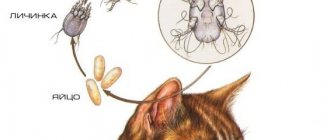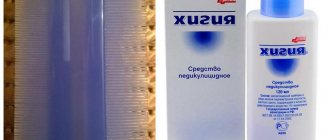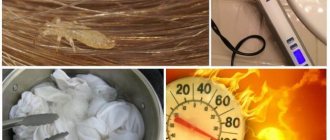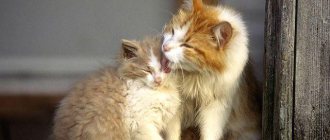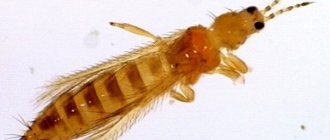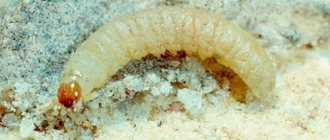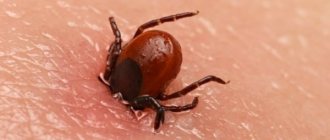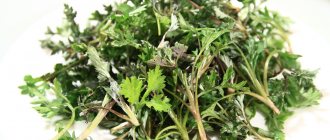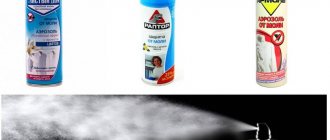Who is to blame for the spread of lice throughout the school?
When it turns out that one of the children at school has lice, parents, worried about their child, begin to panic and look for those to blame. First of all, the object of attacks is the administration of the educational institution, which is accused of irresponsibility, insufficient care for children, and lack of necessary preventive measures.
Sometimes such accusations are justified and lice prevention at school is actually neglected. But it may happen that lice appear in a school where all sanitary and hygienic requirements are carefully observed. You can pick up parasites almost anywhere, for example, in a swimming pool, a fitting room at a shopping center, or a hairdresser.
In a swimming pool
Thus, lice can appear in any child, and he, not yet knowing about the infection, will come to school, provoking the further spread of lice.
In this situation, it is difficult to identify the culprit, and this is not necessary. It is important for parents and school staff to act together to deal with the disease as quickly as possible.
Signs of infection
From the moment a person becomes infected with lice until signs of infection appear, it can take from several days to 1-2 weeks. This is one of the reasons that parasites may appear in several children in a class before lice are identified. The speed at which symptoms manifest largely depends on the individual characteristics of the body.
Main symptoms of infection:
- constant, increasing itching of the scalp;
- change in scalp color, appearance of rashes, spots, flaky areas;
- bite marks, scratches;
- nits in the hair (most often they can be seen at the roots of the hair).
In case of prolonged infection, the scratches become inflamed and pustules appear. This indicates the addition of a secondary infection.
Symptoms of lice
Symptoms of lice in a child
symptoms
- constant itching in those places where lice have infested; with head lice, there can be especially many of them in the area above the ears, in the temporal and occipital parts of the head;
- the appearance of red spots on the skin that remain after lice bites;
- specific gray-blue spots that appear from secreted enzymes after the louse's proboscis is inserted into the skin;
- in an advanced stage, ulcers may appear in places where scratching occurs when infection penetrates there, which will have to be treated additionally.
If you do not notice in time that a child has lice on his head and do not begin to destroy them, then ulcers under the hair may develop and, as a result, pyoderma.
Some children may experience a specific body reaction to the presence of lice in the form of an allergic rash, high fever, headaches, nausea and vomiting. This is usually caused by the penetration of enzymes secreted by insects into the blood.
Order of the Ministry of Health No. 342
Order No. 342 was issued by the Ministry of Health in 1998. It is the main document regulating measures to combat pediculosis pathogens, including in kindergartens and schools. In particular, the order establishes the rules for carrying out measures to prevent head lice and treat it.
Today, preventive and anti-epidemic measures are determined by SanPiN for pediculosis (3.2.3215-14). The joint venture regulates the frequency and procedure for routine examinations of the population, including children attending kindergartens and schools, and the algorithm of actions when a disease is detected. Sanitary rules and regulations are enshrined at the legislative level and are mandatory, including in all educational institutions.
Algorithm of actions for medical personnel
SanPin details what health workers should do if lice are found in a school:
- the nurse or class teacher notifies the parents of the infected student (however, school employees have no right to disclose information about him to students);
- the nurse informs parents about treatment methods and measures to prevent head lice in children;
- the nurse informs the school principal about the identified case of infection;
- A thorough examination of all classmates of the infected person is carried out;
- The school administration transmits information about the case (or cases) of infection to Rospotrebnadzor.
Quarantine
Next, together with Rospotrebnadzor employees, a decision is made on the need for quarantine. Quarantine includes an examination of all students in the class where the disease was detected once every 10 days for a month, as well as measures to disinfect the premises. If the infection has become widespread, the school is closed for strict quarantine for head lice, which usually lasts 7–10 days.
How to protect a child?
The following preventive measures will help prevent children from becoming infected with lice in public places, including at school:
- parents should regularly examine the child’s head (it is advisable to do this once every 1-2 weeks, and if lice are found at school, every day);
- Children must be explained that they cannot use other people’s combs, exchange hats, scarves, or hairpins;
- limit the child’s contact with children who have signs of head lice;
- For girls with long hair, it is advisable to braid their hair or make a bun;
- If signs of lice appear, for example, severe itching of the scalp, you should inform an adult;
- To prevent infection, you can use essential oils of eucalyptus and tea tree (lice cannot stand these odors), adding them to shampoo for washing your hair or simply applying a couple of drops to your comb.
Having discovered parasites in a child’s hair, parents should immediately begin treatment. The only correct answer to the question of whether it is possible to go to school until you are completely free of lice is a categorical no.
Medical examination
Medical institutions should regularly check the population for lice infection in all places of constant contact of large groups of people: schools, kindergartens, correctional institutions, hospitals, etc.
Sanitary and epidemiological regulations indicate the frequency of such inspections and the rules for their conduct.
According to paragraph 3.12 of SanPiN 3.2.1333-03, the following population groups should undergo regular inspection for lice:
- Children living in orphanages and boarding schools are checked for head lice once a week;
- Hospital patients upon admission to inpatient treatment;
- Citizens working at enterprises and institutions are checked during routine medical examinations;
- Inspections of social security institutions take place twice a month;
- Schools and higher education institutions are inspected once a quarter. Schools are also required to conduct inspections after holidays and at the end of the school year.
In addition to examining the head, clothing is also checked for body lice.
Examinations may only be carried out by medical professionals.
Now you know how to check whether there are lice on your head, and are familiar with the methods of individual and mass testing of the population for lice.
Our website has many useful articles about pediculosis:
- Do lice grow on colored hair and what are the specifics of treatment and selection of anti-pediculosis agents?
- how to remove nits and lice from long hair without resorting to a “zero” haircut?
- what to do if lice appear on your head? First and subsequent actions!
- a cloudy pool of your eyes, or lice on your eyelashes;
- what to use to combat parasites on the head: what are lice and nits afraid of?
- treatment of pediculosis in pregnant women, as well as in nursing mothers: how to safely remove harmful parasites?
- pediculosis in adults: causes of infection and how to treat lice and nits?
- the best of the best: products for the prevention of head lice;
- consequences of lice or what are the dangers of lice?
Inspection procedure
School lice inspections are performed by a nurse using a fine comb and a magnifying glass. The examination is carried out in a room with good lighting. Particular attention is paid to the hair on the back of the head and the area behind the ears. The results are recorded in a special journal. After each inspection, the comb must be disinfected by wiping with alcohol or pouring boiling water over it.
Inspection is a mandatory procedure carried out to prevent the spread of parasites among students and school staff. If a child is diagnosed with lice, the nurse notifies the class teacher and parents. The child's treatment is carried out by the parents. You can go to school only after the doctor, after an examination, confirms the absence of parasites and gives a certificate of complete recovery.
Actions to take when identifying parasites
The algorithm for examining a patient for pediculosis allows you to quickly and accurately make the necessary diagnosis and prevent the spread of the parasitic infection. Manipulation can be carried out in preschool institutions, camps, kindergartens, and schools.
When an infection is detected in a child, the school does not draw up a report, but a special log is kept. Children are excused from classes and treated at home, but if necessary, they can go to the clinic. They are given a certificate of forced absence from classes.
If lice are detected in a hospital, the infected person is isolated, his clothes and bedding, as well as items worn by the staff at the time of the examination, are subjected to heat treatment and disinfection. The patient himself is treated according to the existing method:
- The couch is covered with a sheet or film.
- A cape is placed over the patient's shoulders, and the face is protected with a roller around the head.
- The hair is combed and treated strand by strand with the selected anti-parasite product.
- Cover your head with a plastic cap and wait for the required time.
- Wash with warm water and shampoo, rinse with a solution of table vinegar.
- Put on a plastic cap again and hold for another 20 minutes.
- Rinse out the vinegar and wrap your hair in a towel.
- Nits and lice are combed out with a fine comb.
- All used instruments and materials are disinfected.
- Repeated examination of patients with head lice after treatment helps to exclude recurrence of infection.
Treatment of lice
Determining the presence of lice is quite simple, but to confirm the diagnosis and prescribe proper treatment, you should consult a doctor. Pharmacies offer a wide range of drugs to get rid of lice, most of them are approved for use in children.
To treat head lice at home, you can use remedies in the form of:
- shampoo;
- ointments;
- spray;
- lotion.
Lice remedies
If the instructions are strictly followed, most modern products remove parasites after one use. In order to consolidate the result, the procedure is repeated after 2 weeks. During this time, the child cannot attend school or other public places.
Therapy also includes preventive measures. It is necessary to carefully examine everyone who lives with the child, and repeat this procedure until he is completely cured. Wash the sick person’s personal belongings, bed linen, towels, and especially carefully treat all combs, hairpins, and hats.
Disinfecting the apartment won't hurt either. If you don't want to use chemical insecticides, you can use natural repellents, such as essential oils. However, we must remember that in this case, pharmaceutical products are much more effective than traditional methods.
What to do if a child has lice on his head?
So, you find lice on your child - what to do? First of all, you should calm down and take a sober look at the situation. Lice are just harmless parasites that are very easy to remove.
Read more about the types of lice, how they reproduce, and the incubation period on our website.
If you are constantly being monitored by doctors, then feel free to go to a specialist for diagnosis and treatment of head lice in your child. The main condition in this situation is to follow all the doctor’s recommendations.
If you trust your health and your loved ones to folk recipes, then you can start making medicinal masks and baths. In this case, kerosene masks, rinsing your hair in vinegar water, hellebore water, as well as the use of essential oils (tea tree oil), laundry and tar soap are perfect for you.
It is also worth understanding that lice are parasites that spread very easily and require comprehensive and close attention. Therefore, in addition to folk remedies, our website also contains descriptions and instructions for the use of some other pharmaceutical products suitable for children: sprays for lice and nits - Nyuda, Paranit, Pediculen Ultra, as well as anti-lice ointments: Benzyl benzoate and Sulfuric.
In addition to removing parasites from your skin and hair, thoroughly disinfect all household items and pastels. What is the best way to disinfect?
If we are talking about things and bedding made of fabric, then you can simply wash them at high temperature and carefully iron them.
At higher degrees, the parasites will be destroyed the first time. Disinfection is necessary for combs, hair accessories and other personal hygiene products.
In this case, chemicals are used that can kill all lice. It can be spray, powder, gel or liquid. There are also means to repel parasites. They should be sprayed onto the entire body, clothing, or places of frequent residence.
IMPORTANT! The most important and mandatory condition is mechanical combing, which allows you to get rid of 95% of lice and nits on a child’s hair. Combing is a must! Using a special comb, you get rid of parasites and their derivatives
Thereby protecting yourself and your loved ones from re-infection.
Of course, if you have the opportunity, then it is best to completely get rid of objects with which the infected person has been in contact. If you have a large family, then you need to examine all members, and also isolate healthy ones from the infected family member as much as possible. It is also necessary to develop a set of preventive procedures for the family.
Prevention
Parents at home, a health worker, or the class teacher at school should tell children about preventive measures against lice. You can significantly reduce the risk of infection by following simple recommendations and maintaining personal hygiene. But do not underestimate the importance of measures taken within the educational institution itself.
Prevention of head lice at school includes the following rules:
- All children are examined for lice by a health worker 4 times a year, and random checks are also carried out every month;
- if one of the students is found to have parasites, he is suspended from classes until complete recovery;
- A child can return to school only with a certificate of no lice issued by a doctor.
The best prevention of lice infestation in an educational institution is the timely identification, isolation and treatment of children with head lice.
How to prevent a head lice epidemic at school?
To prevent multiple lice infestations among students and prevent an epidemic, school staff need to take immediate action as soon as the first student with lice is identified.
The procedure is determined at the legislative level and is described in detail in SanPiN. The main thing is the immediate isolation of the infected student, examination of all his classmates, warning the parents of all students about the detected case of lice. In such a situation, measures to prevent head lice in children become of particular importance, and special attention should be paid to them not only at school, but also at home.
Where to go if head lice is detected at school?
If one of the children is found to have lice at school, you should first contact the class teacher. Then he or the parents themselves bring the information to the school administration. It is the management of the educational institution that must take responsibility for solving this problem.
Rospotrebnadzor
If time has passed after the appeal, but no measures are taken to prevent the spread of infection or the problem is completely hushed up, parents should know where to complain.
The complaint must be sent to Rospotrebnadzor, as well as to the district education department.
Question about lice.
Good evening! Girls, tell me if anyone knows. In our garden, or rather in our group, lice have been wandering around for a month and a half now, and they just don’t want to stop. We were lucky for 1.5 months, once a lice was removed from a child in the group, but apparently she just jumped, she was lucky. but the drug was purchased on the same day, regularly, every other day, the teacher reports that some child in the group was found again.
The last time the girl was treated was on Monday... This evening I started scratching my head, found nits, immediately treated her and my sister, spent the allotted time, washed it, combed it, nothing fell out, dried my head, started looking again, and removed the lice, alive. and about three living nits, i.e. the remedy did not help.
I know that now in schools and kindergartens there is such a problem, surely someone has encountered such a problem, how do you cope with such a problem in your gardens and for how long, what procedures are carried out?
I’m already stupidly afraid to take my children to kindergarten... I’m lying there scratching myself... either it’s nerves, or I’ve caught it too.
